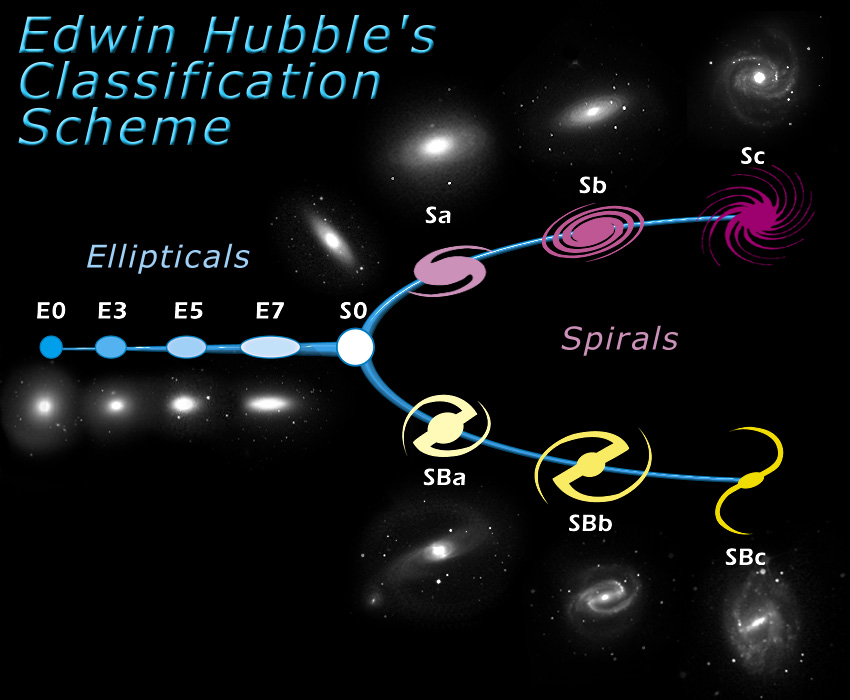Beyond the Solar System
Stars
Stars are large masses of gas that have been formed by the action of their own gravitation. The pressure of the gas under gravity has caused the gases to become so hot that nuclear fusion can initiate. The smallest star is around 97 Jupiter masses while the largest are about 150 solar masses.
Galaxies
Galaxies are large systems of stars and interstellar matter, typically containing several million to some trillion stars. The mass a galaxy is between several million and several trillion times that of our Sun. The distance across a galaxy can extension of a few thousands to several 100,000s light years. Typically, individual galaxies are separated by millions of light years distance. They come in a variety of shapes: Spiral, lenticular, elliptical and irregular. Besides simple stars, they typically contain various types of star clusters and nebulae.

Our own galaxy is a giant spiral galaxy, the Milky Way Galaxy, which is 100,000 light years in diameter and a mass of roughly a trillion solar masses. The nearest dwarf galaxies, satellites of the Milky Way, are only a few 100,000 light years distant, while the nearest giant neighbor, the Andromeda Galaxy, also a spiral, is about 2-3 million light years distant.
On a larger scale of the universe there are clusters of galaxies, superclusters
Exotic matter, black holes, quasars, pulsars
Radiation
